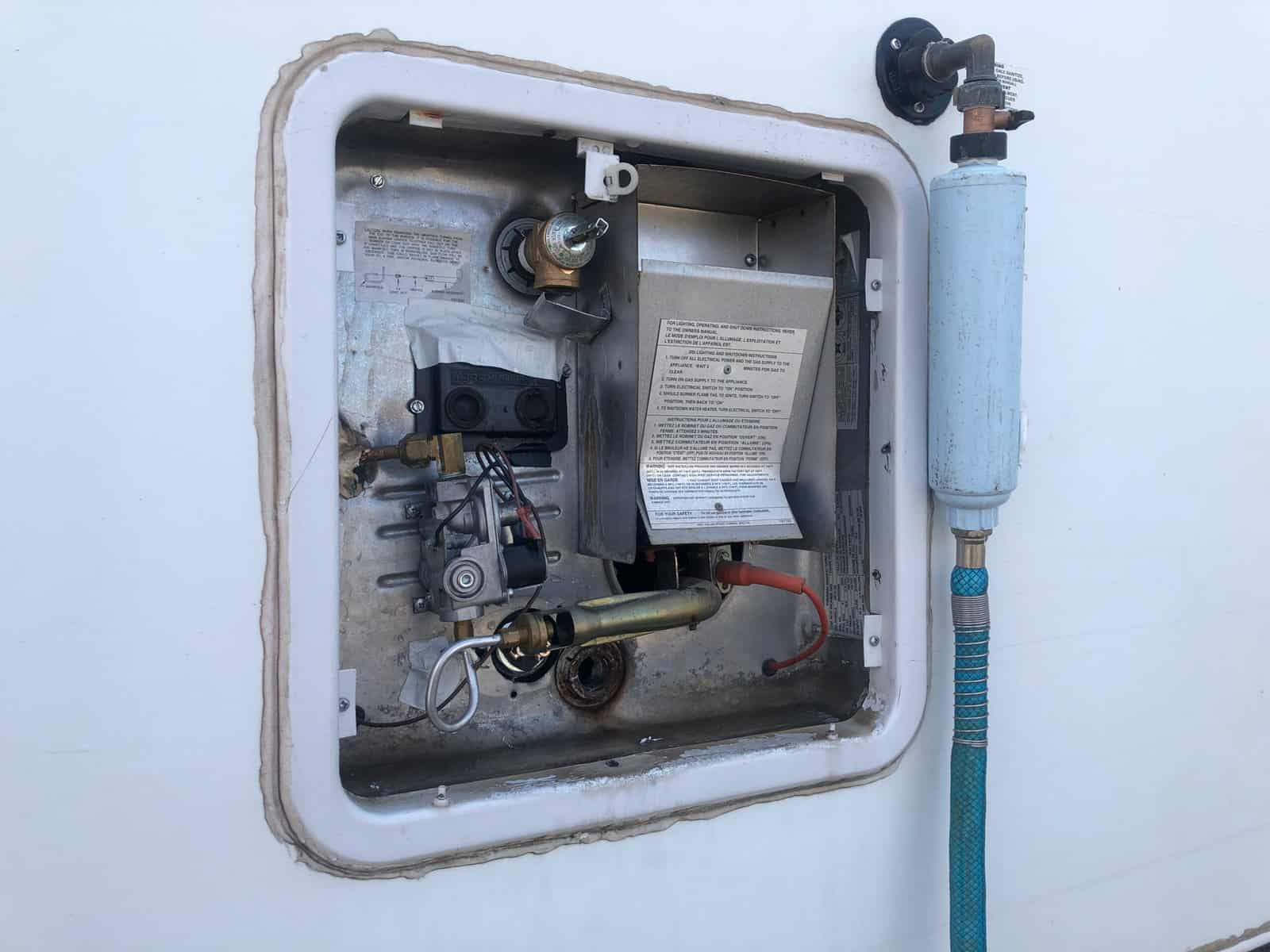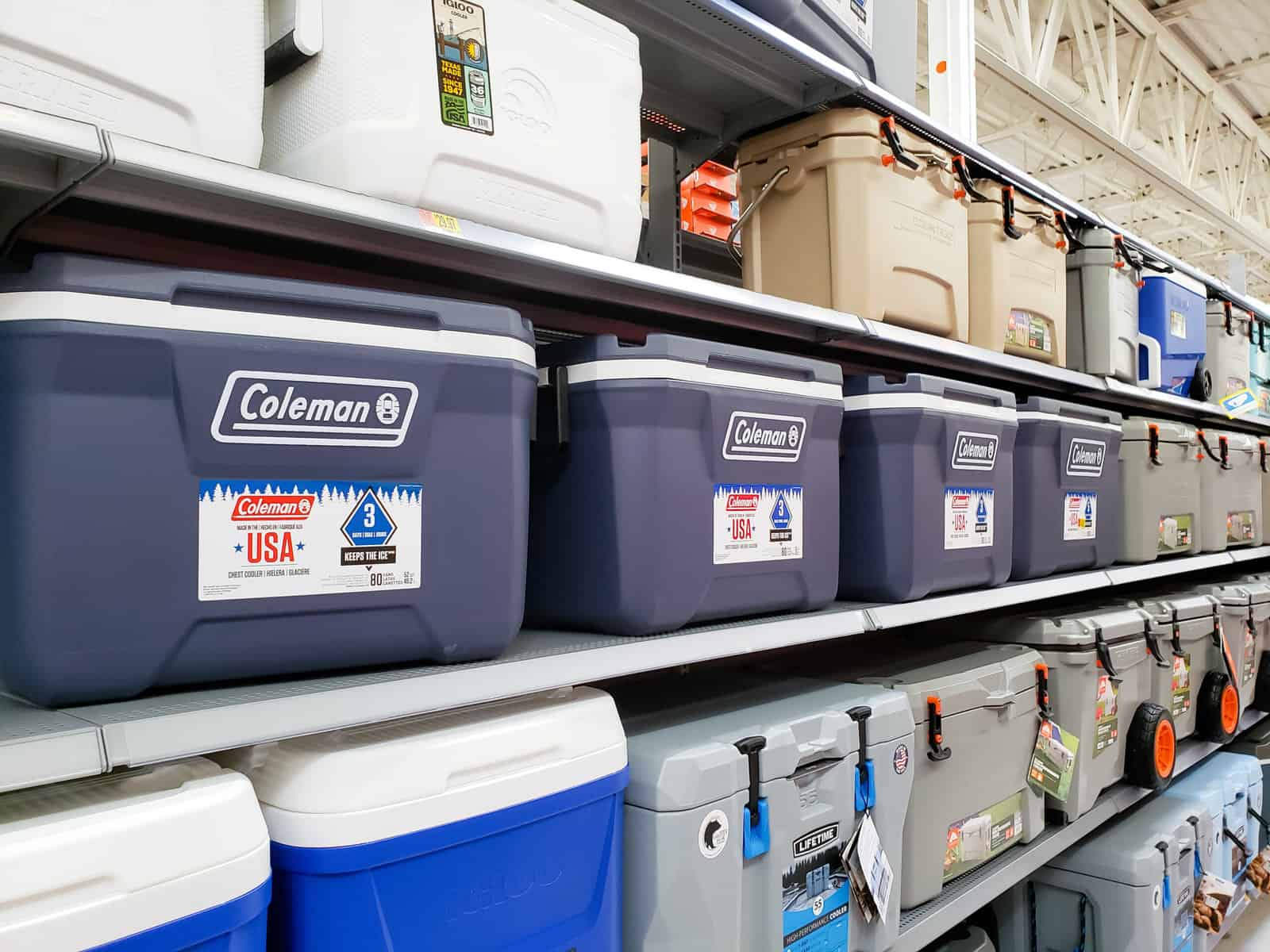All RV refrigerators stop working at some point. If yours has a problem, this article on how to troubleshoot an RV refrigerator can help.
Keep reading and watching to learn the most common problems with gas and electric absorption RV refrigerators. When you’re done, you’ll know how to make your RV refrigerator work better.
First, Understand How RV Refrigerators Work
If you are unfamiliar with the cooling process of an RV absorption refrigerator, watch this helpful video with the late “RV Doctor” Gary Bunzer.
He explains how the absorption process uses heat to remove heat from inside the refrigerator in order to make it cold. You will also learn why keeping the refrigerator level and properly vented is key to proper cooling.
Understanding the basics of absorption refrigerator operation and cooling makes it easer to troubleshoot an RV refrigerator problem like the one you are having today.
The refrigerator should not be more than 3 degrees unlevel left to right, or 6 degrees unlevel front to back. We do not recommend having the unit unlevel for more than 1-2 hours as this can increase the chances of a blockage. However, we do recommend if you can, have the unit level at all times.
Dometic Refrigerators Service Manual
Do any of these 3 common RV refrigerator problems sound like yours?
It doesn’t matter which of these RV refrigerator problems you are troubleshooting. Everything starts by double-checking that the unit is:
- level
- receiving 12 volts of DC power
- and that the LP gas is on
Before you get started, you should know that troubleshooting an RV refrigerator problem usually requires working around household electrical current. If you’re not careful, it can deliver a fatal shock. Understanding the steps to test or repair 120 VAC (Volts of Alternating Current) is essential. If you don’t know them, go straight to a qualified service center.
The number one RV refrigerator troubleshooting tip is to make sure your rig is completely level.
RV Refrigerator Troubleshooting – What You Must Know, RVShare.com
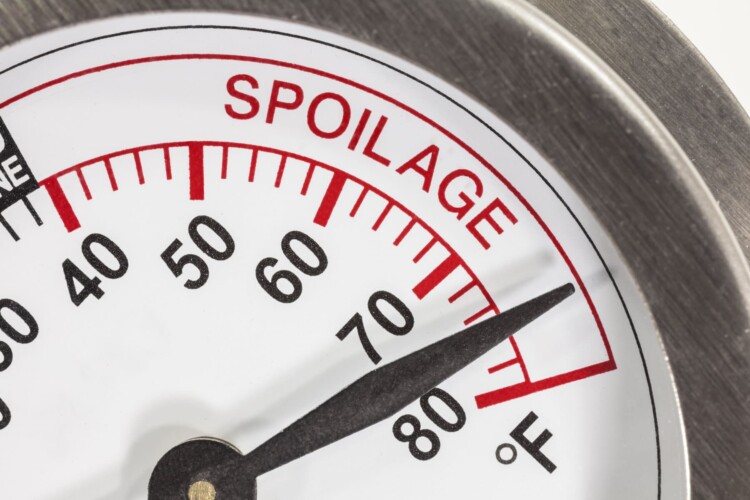
Let’s Review 3 Common RV Refrigerator Problems
In most cases when the refrigerator works on gas, but not electric, the heating element is the cause. Let’s get into troubleshooting this first common issue.
Scenario 1: The RV refrigerator only cools on LP gas. It won’t cool on electric power.
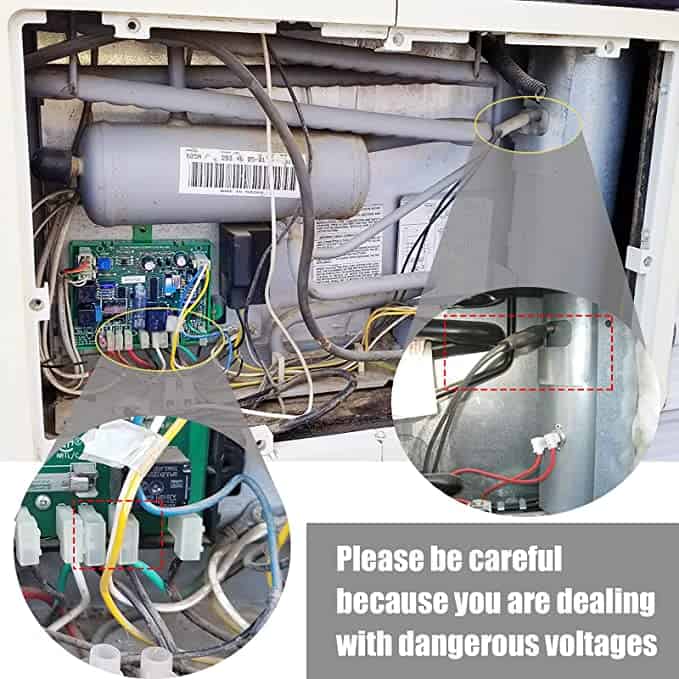
Since the refrigerator cools fine on the heat supplied by LP gas, but not on electric, we can immediately conclude that the 120-volt A/C (VAC) heat source (or lack of) is our problem. Here’s what to do about it.
- First check there is 120 VAC to the RV refrigerator power outlet. The outlet is typically located behind the refrigerator. It’s often near the removable lower vent on the exterior of the RV.
- No power at the outlet? Verify your RV is plugged into an energized source. Inspect circuit breakers in your RV to ensure they did not trip.
- If power is present at the outlet, turn the refrigerator on for 120 VAC operation. Most newer RV refrigerators automatically default to 120 VAC when turned on. Then turn the thermostat down to assure the unit is trying to cool.
Next, pick up your volt ohm meter. Then verify there is 120 VAC present where the heating element plugs into the circuit board.
- If no power is present, your problem is likely in the circuit board.
- The problem could also be the “eyebrow assembly” where the controls are located.
Try to reset the refrigerator. This is simple if yours is equipped with a reset button.
- If this is unsuccessful, your best bet is to take your RV to an authorized service center. They have the specialized equipment to check the eyebrow assembly and circuit board.
Is power is present, but you are unable to feel any heat radiating from the cover of the burner tube /boiler area?
- If yes, the heating element is likely bad. Watch this video to learn where the heating element is located, how to diagnose, whether it is good or not and how to change it:
Scenario #2: The refrigerator only cools on electric (shore power), but not gas.
Is the refrigerator cooling on electric, but not on LP gas? If yes, the problem lies in the gas portion of the refrigerator. It’s not the cooling unit. Read this summary of how the gas portion operates before moving forward:
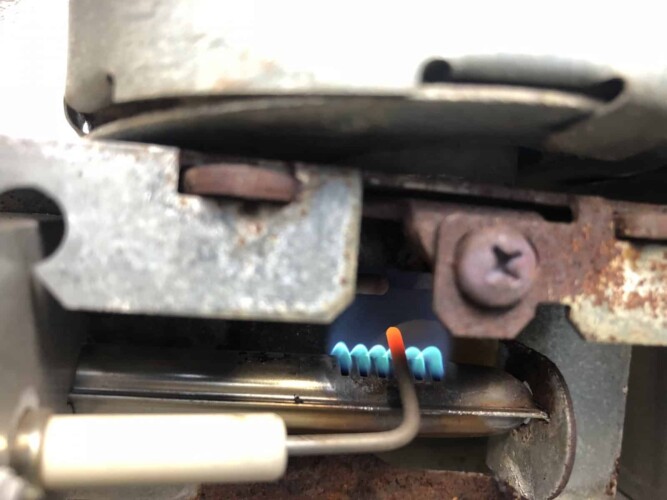
Does your refrigerator not light or stay lit on gas? Here are the things to look for.
- Stand at the rear of your refrigerator. Then ask someone inside the RV to initiate a cooling cycle. Carefully listen for the gas valve to click open. You also want to hear the snap of a high voltage spark or two from the ignitor.
- If the unit successfully lights on gas, you should hear a soft but audible roar from the burner. It’s smart to remove the burner cover, which allows you to visually verify the spark and burner operation. The flame should be robust and blue, not orange and lazy like the flame from a candle.
Do you hear the valve click open, smell gas, but don’t hear or see a spark?
The problem could be one or more of these common issues:
- Igniter is defective or dirty
- Loose connection / damaged ignition wire between the circuit board and the igniter
- Circuit board is bad and not emitting high voltage to the igniter
- Rust scale has fallen from the burner tube onto the igniter. This causes it to ground out, rather than spark
Do you hear a spark, but don’t hear the gas valve click (opening)?
If this sounds like your RV refrigerator issue, the cause could be one or more of these common scenarios.
- Gas valve has failed
- Circuit board is bad and not emitting power to the valve
- You have a stuck gas valve. A light tap or two with the butt end of a screwdriver often “fixes” a stuck gas valve
- Voltage is too low to open the gas valve . The valve and circuit board require a minimum voltage of 10.5 volts DC to operate.
If you don’t hear / see anything happen, the cause could be one of three issues:
- The circuit board is probably bad
- No 12-volt power to board. You may have a blown fuse, dead house batteries, no signal from eyebrow assembly, etc.
- Your refrigerator has no power. You might need to reset if it features a reset button
Do you hear the gas valve click and igniter spark, but the burner doesn’t ignite? Or it ignites, but the flame is weak?
The cause of this RV refrigerator problem could be one of three issues:
- No propane or low gas pressure, bad LP regulator or oil in lines. Pro Tip: consult a RV repair facility to verify correct gas pressure at the refrigerator
- Dirty burner
- Dirty orifice (spiders like to nest in them)
Does the refrigerator light on gas, but won’t stay lit?
In that case, the cause could be one of the following issues:
- Bad / dirty thermocouple
- Dirty Burner
- Low gas pressure – possible bad LP regulator or oil in lines
- Dirty orifice
Here’s how to gain access to the refrigerator burner. In addition, the video explains common problems that occur when the refrigerator operates on gas.
Important Safety Tip to Troubleshoot an RV Refrigerator
Want to change a gas valve yourself? Be certain to check any LP gas fittings you disturbed. Inspect for leaks prior to operating the refrigerator again.
Scenario #3: The refrigerator doesn’t cool on gas or electric.
Does the electric element heats and has the proper resistance? Does the gas side light with a healthy blue flame? The problem probably is in the venting or the cooling unit. Here are some things you can try to troubleshoot an RV refrigerator problem that sounds like this.
RV Refrigerator Venting Problems
RV absorption refrigerators require a flow of air across the back of the cooling unit to remove heat. This is the heat transferred from the interior of the refrigerator by the absorption process. All heat generated by the electric element or gas burner is included too.
This air flow is created via convection. Cool air enters from the outside via the lower vent on the side of the RV. Next, it rises across the back of the refrigerator. And then it exits via the roof vent or upper side vent. If anything obstructs the flow of air across the back of the refrigerator, then the cooling process is impaired.
Common venting problems include insulation coming loose, or jammed leaves, needles, or bird nests on the roof vent. Look atop the condenser fins on the top of the cooling unit, too. Other potential venting problems include poorly designed side vents or side vents mounted too low to allow for convection.
RV Refrigerator Cooling Unit Problems
It’s not uncommon to have correct venting with a refrigerator that won’t cool, If that happens, the problem is most likely with the cooling unit. Look for signs the cooling unit has failed or is failing. These dangerous signals include:
If you see either of those signs, quit using the refrigerator immediately
Visit your RV service center for help.
Hopefully this short tutorial on how to troubleshoot an RV refrigerator provides you with the information you need to get it working again. Fixing common problems in absorption refrigerators isn’t always as hard as it seems.


